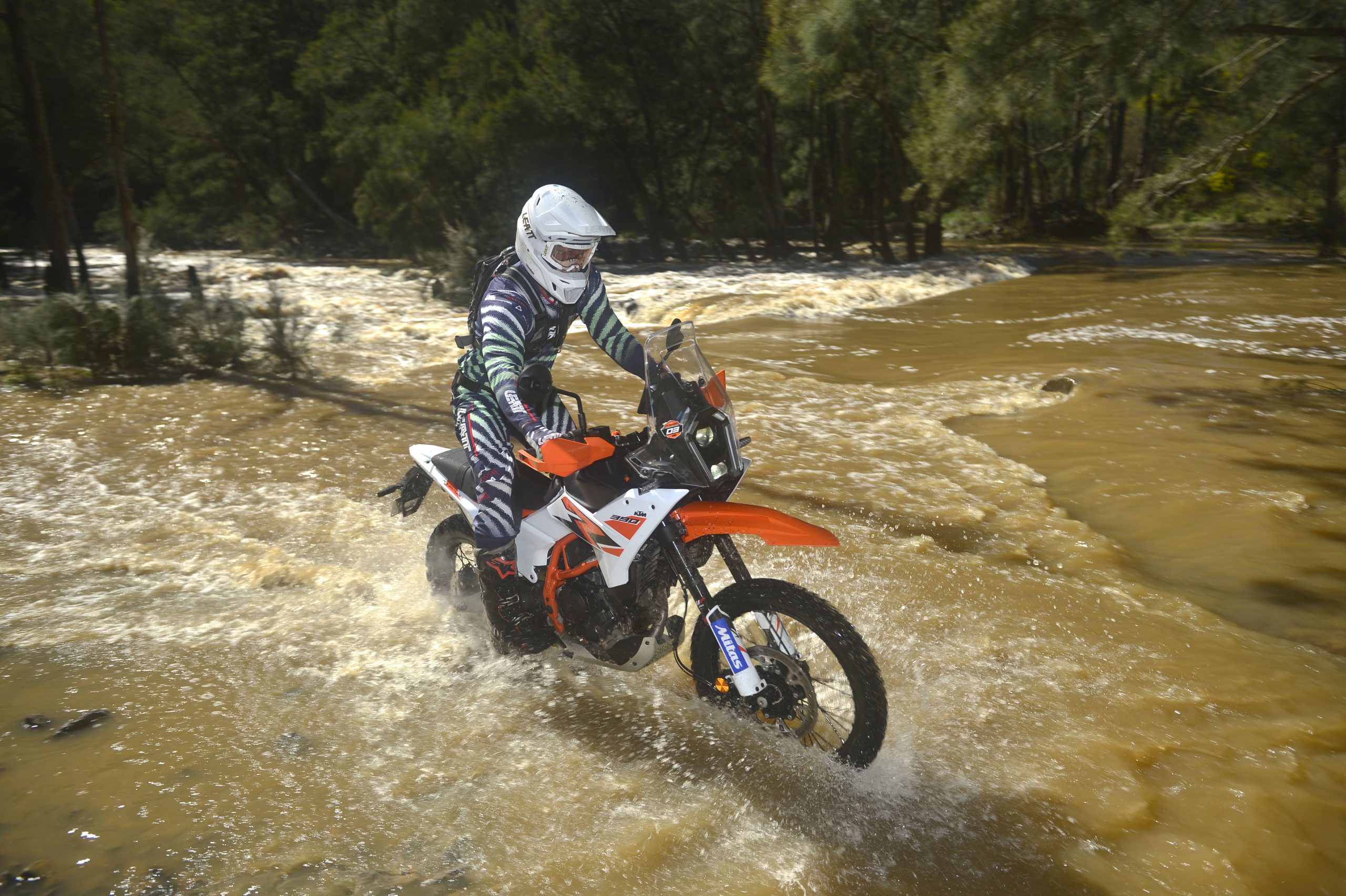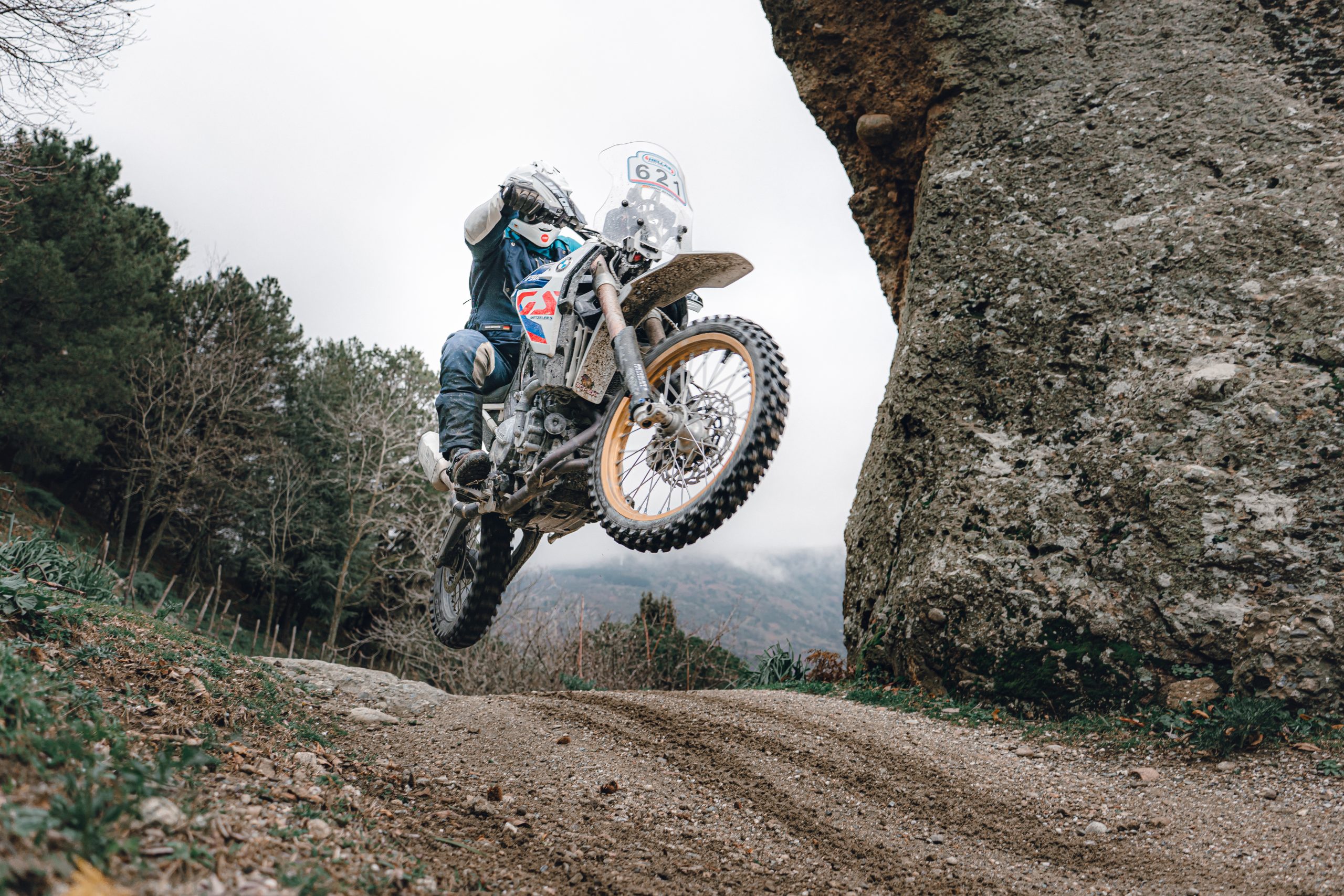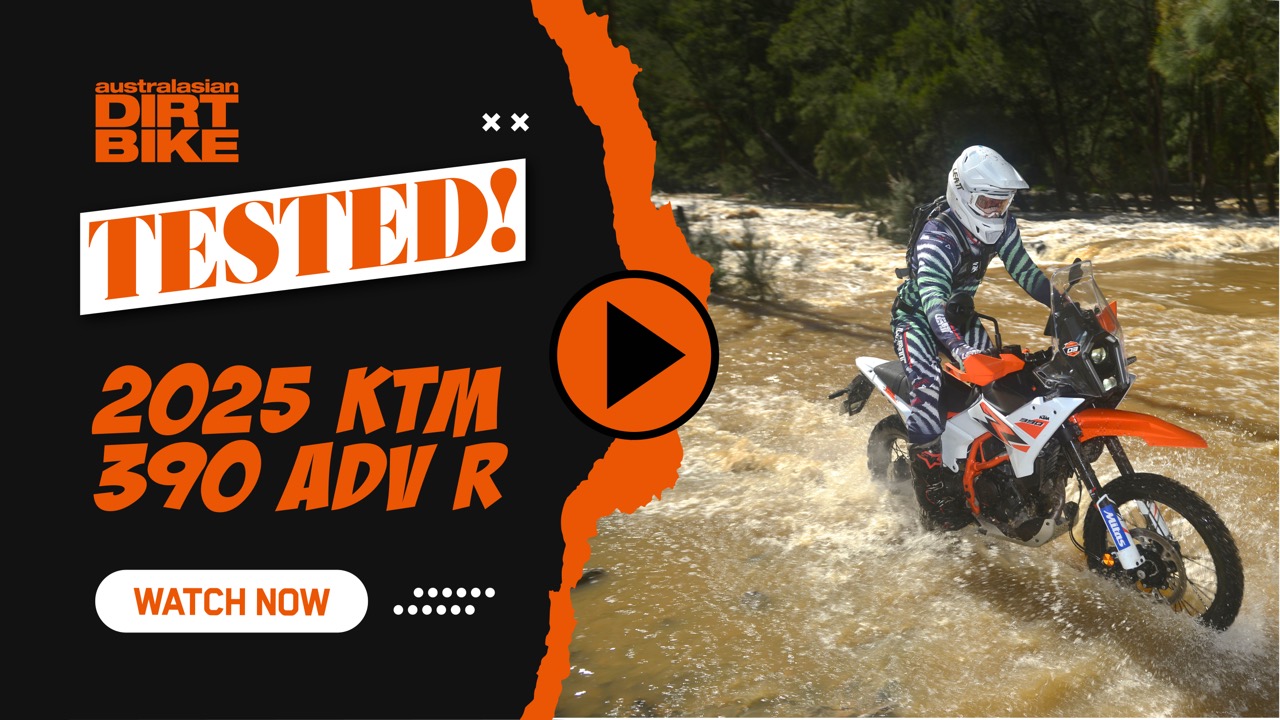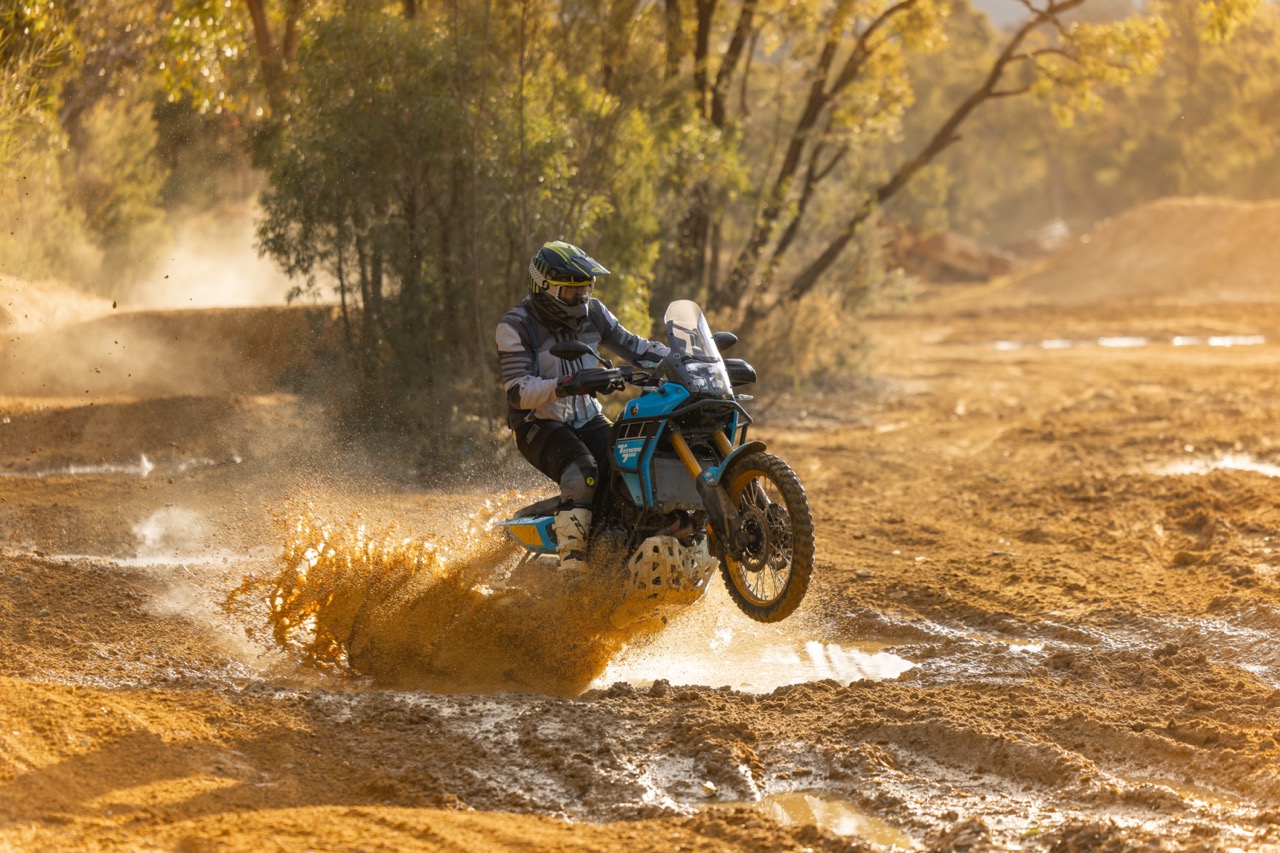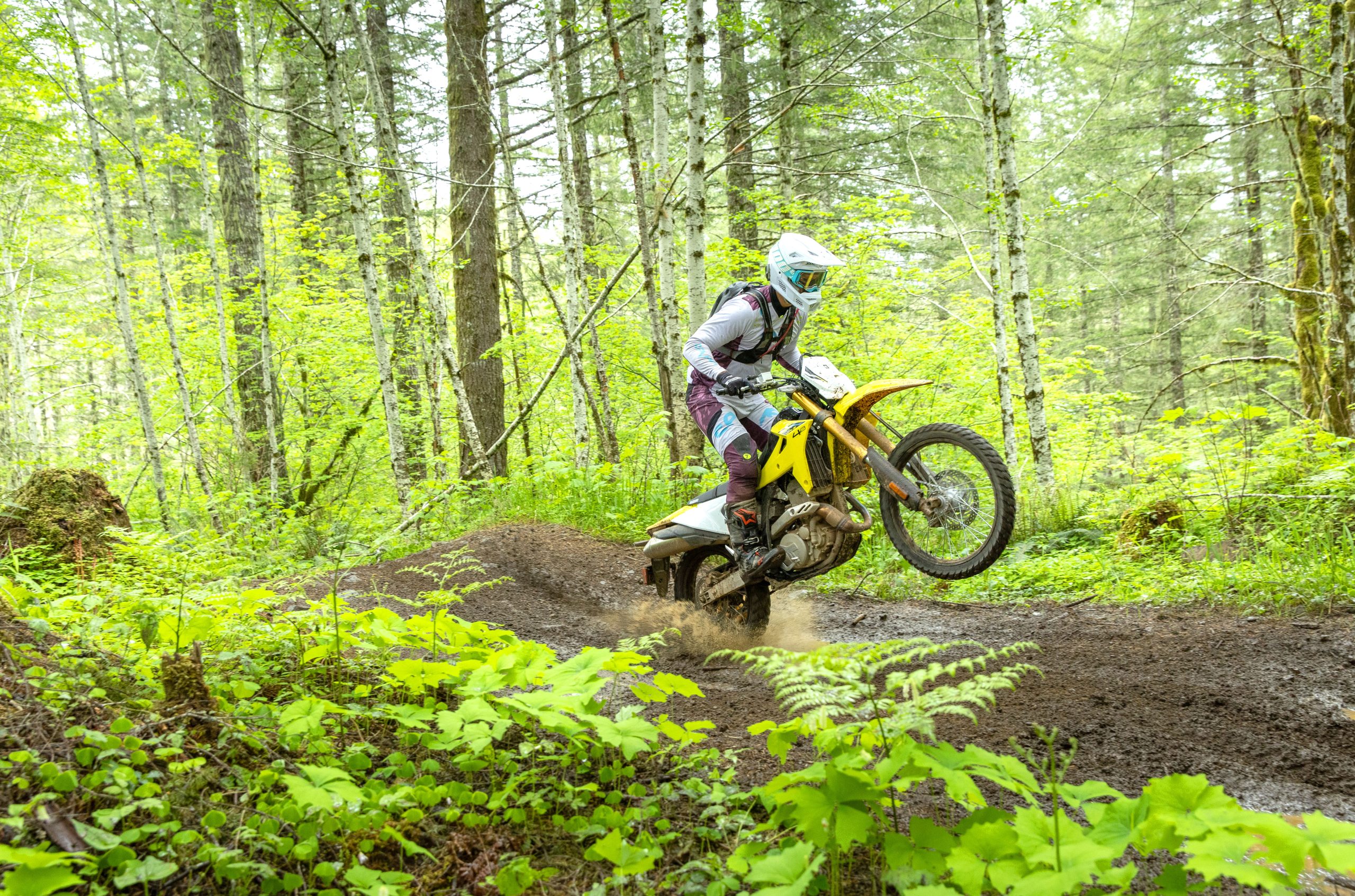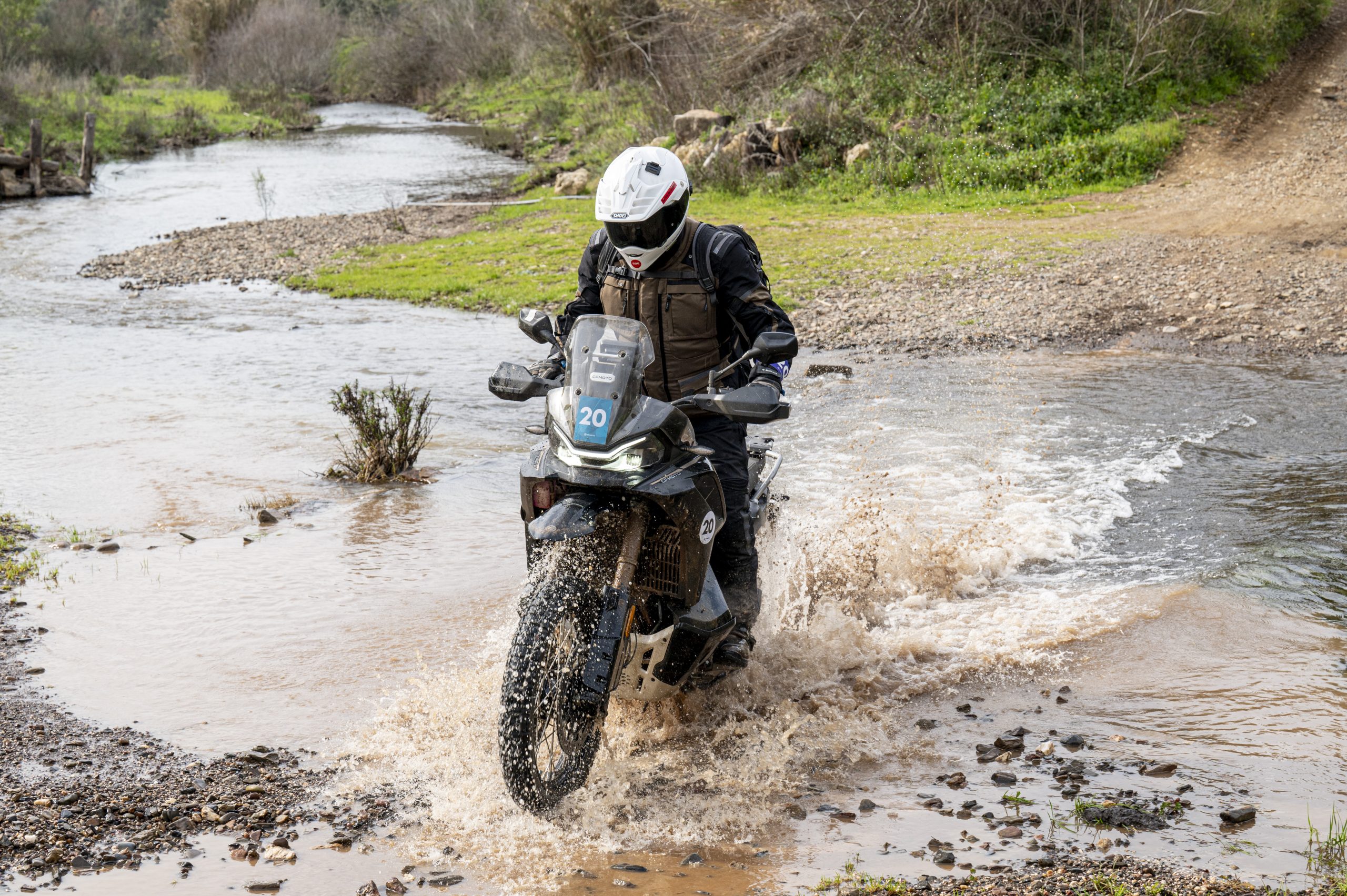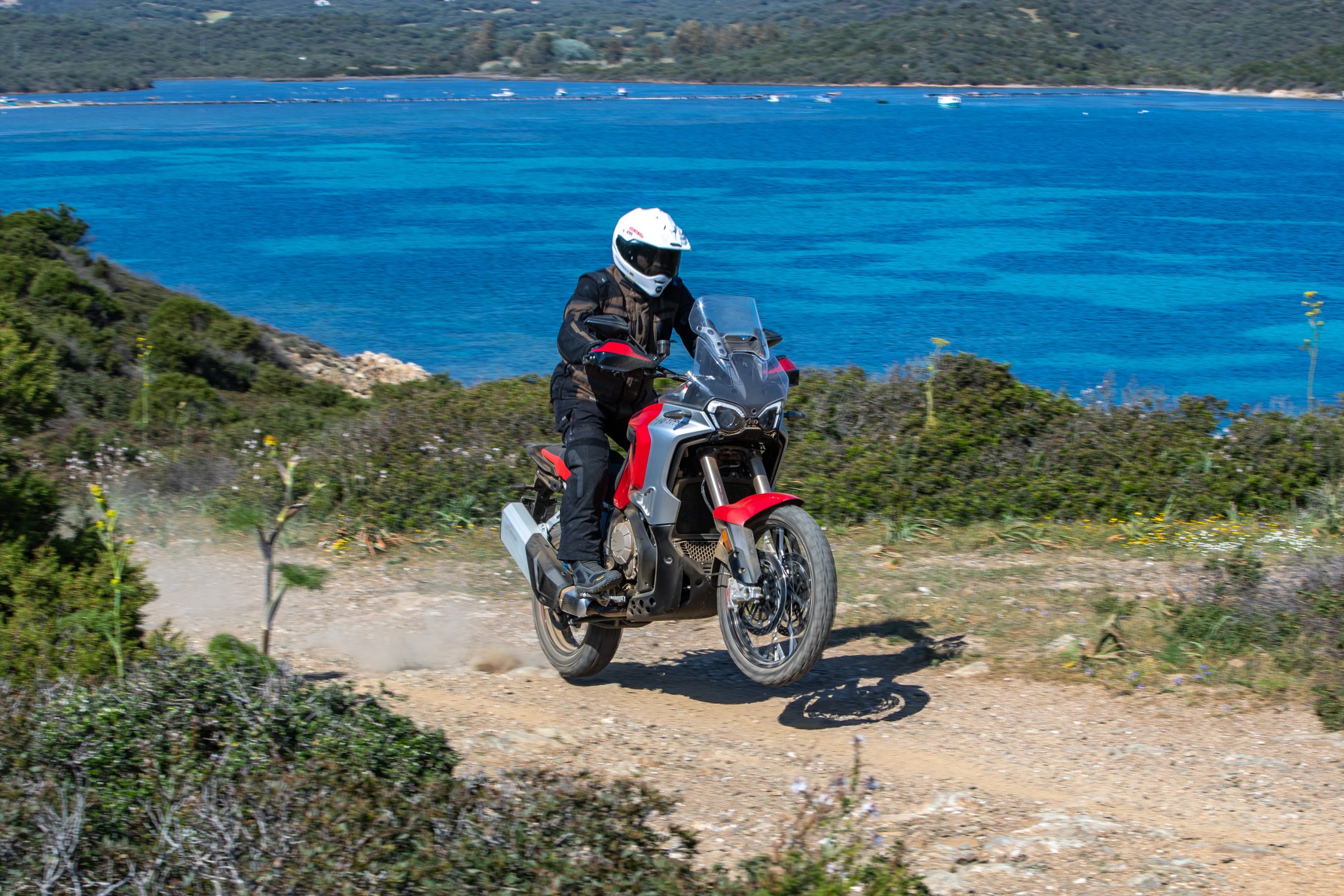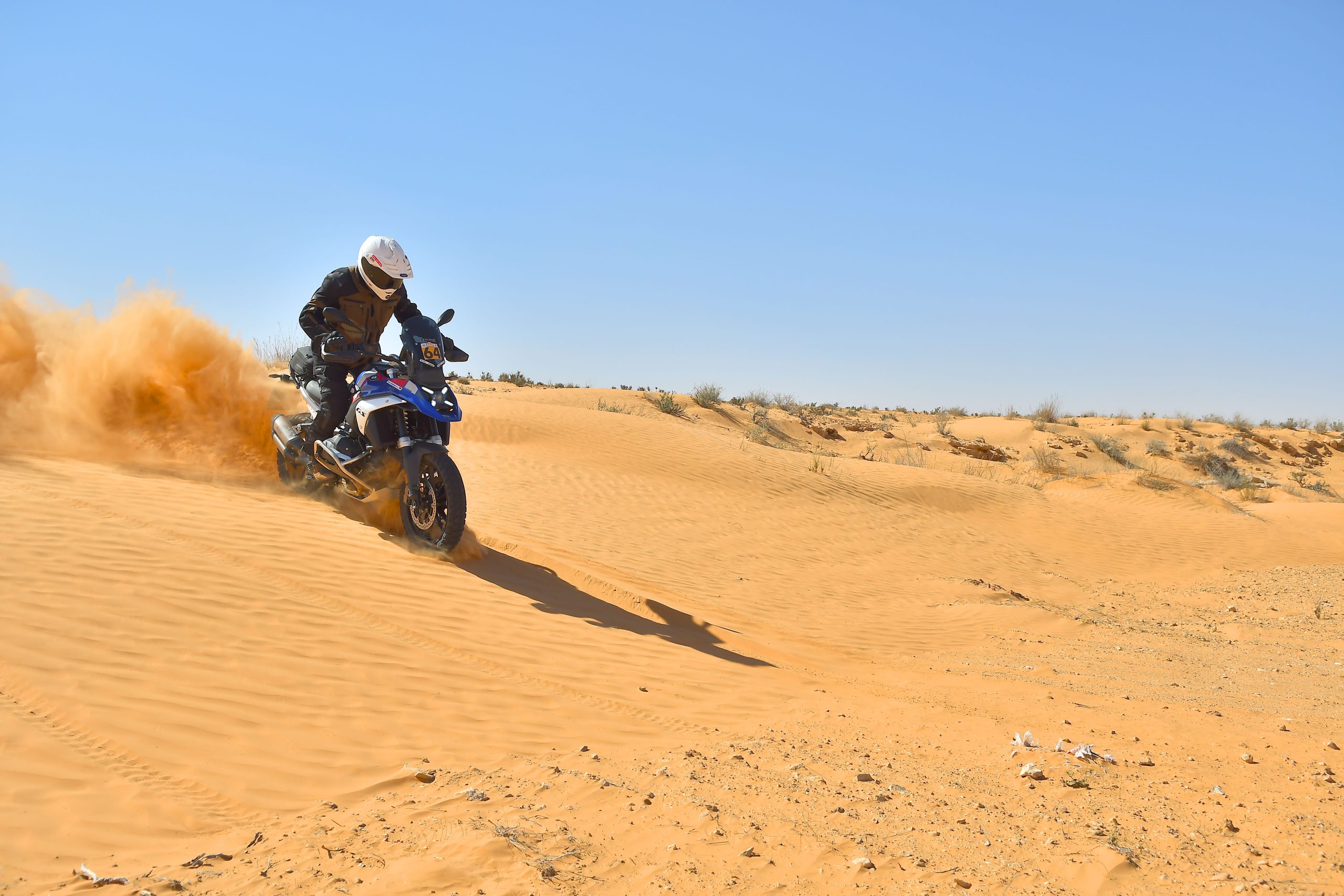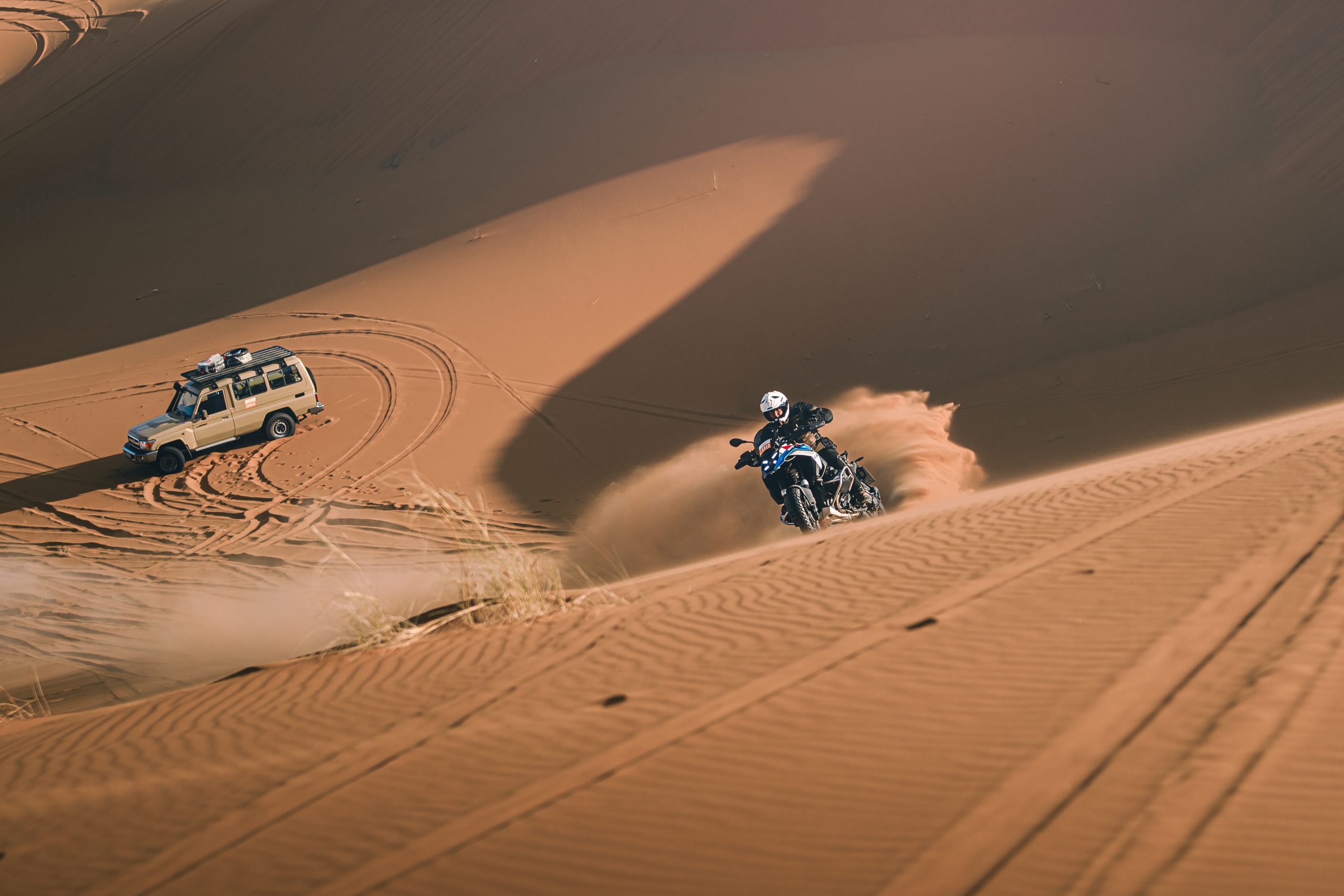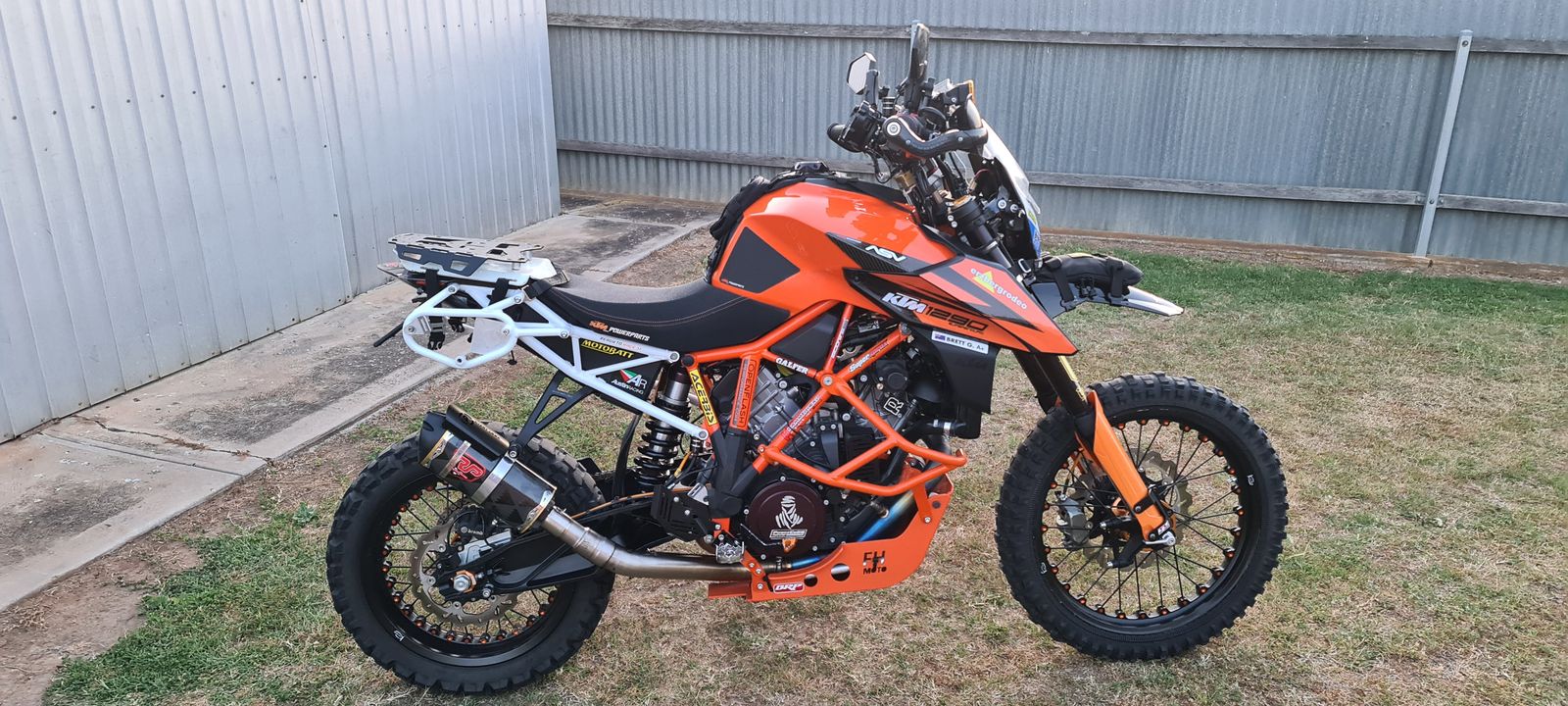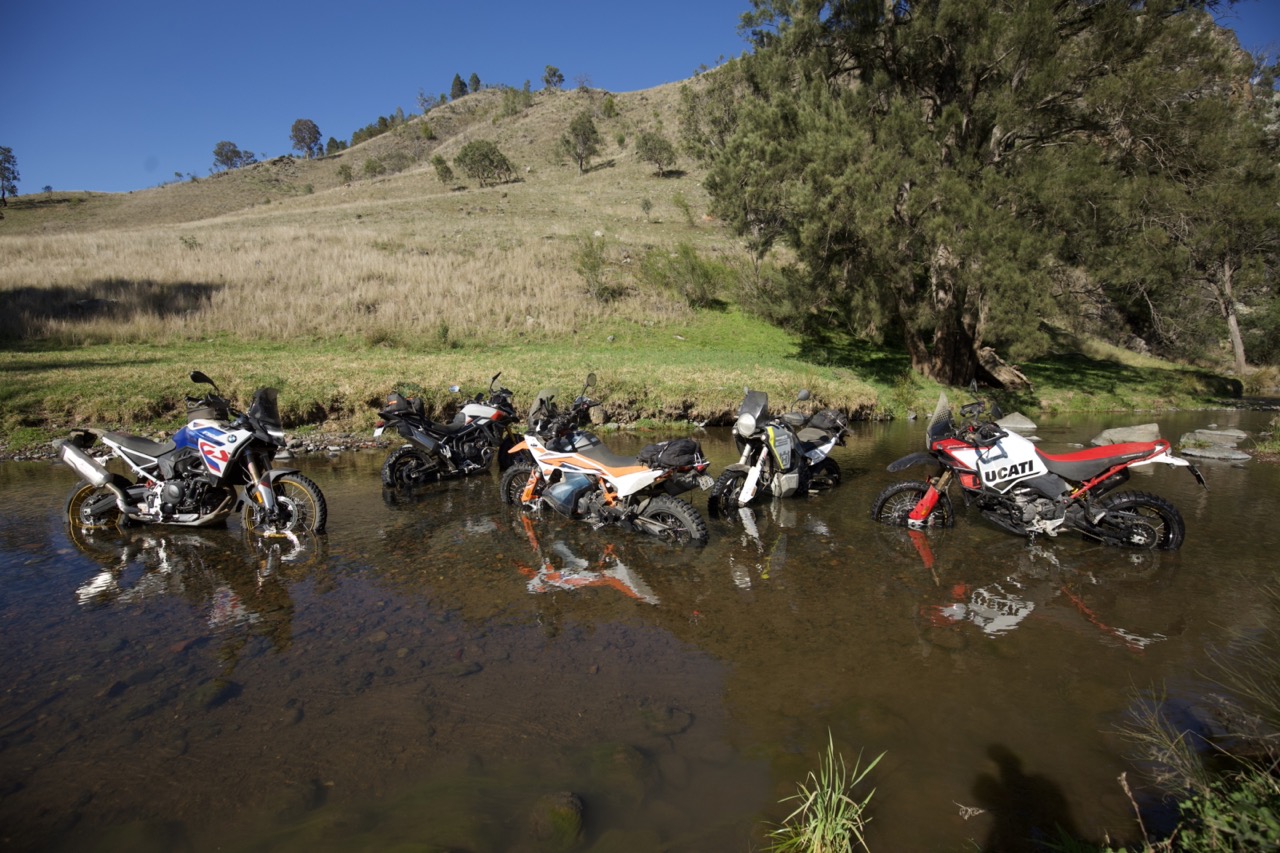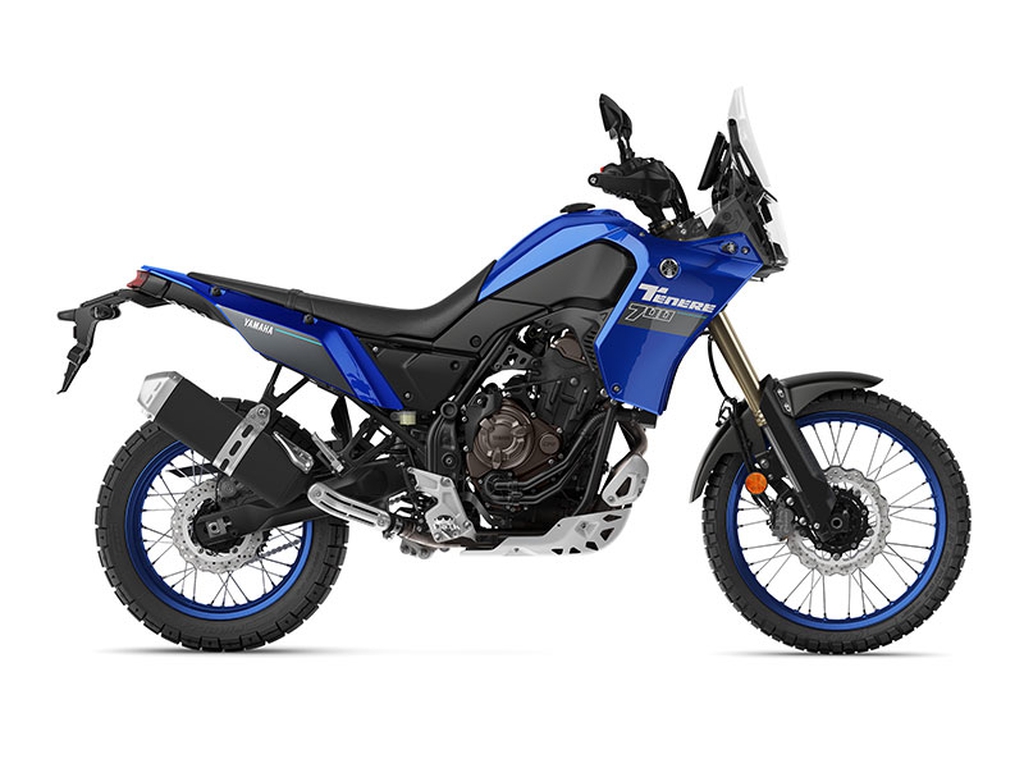In turbulent times, MV Agusta has managed to launch a new three-cylinder engine family and knit an adventure bike around it called the MV Agusta Enduro Veloce. Now it is finally here, we want to know if it carries the sporty DNA of the legendary Italian brand?
In every conversation about the famed Italian manufacturer from Varese, sooner or later the “…yes, but…” comes up – usually about spare parts, customer service, quality control or machines so overbred they’ve become increasingly niche and expensive.
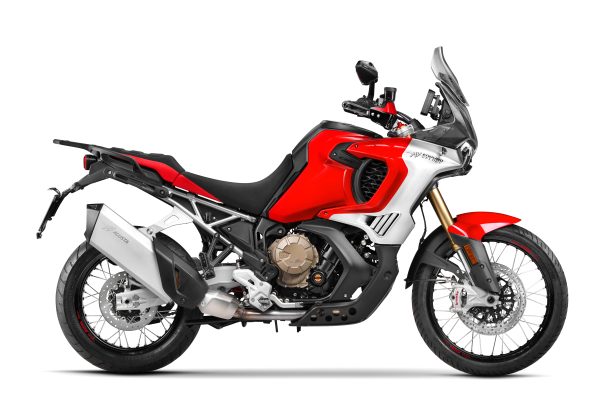
Add to that a chequered history of owners, partners and lofty promises – especially from Timur Sardarov, whose Russian family initially acquired 49 per cent of MV Agusta via Com Star Invest in 2017 before taking full control in 2019.
Now, it looks like the winds of change are finally blowing in a positive direction. In March 2024, earlier than expected, KTM (via Pierer Mobility Group) took a majority stake in MV Agusta. Hubert Trunkenpolz is now both CEO and Chairman of the Board. Many from the Sardarov era remain on board, and the CRC design centre in San Marino is still operational. One key figure missing from the launch of the new Enduro Veloce in Sardinia, however, was Brian Gillen, the long-time Head of Development, who recently moved to Norton in the UK.
That said, the new Enduro Veloce – MV’s first true adventure bike – clearly bears his mark.
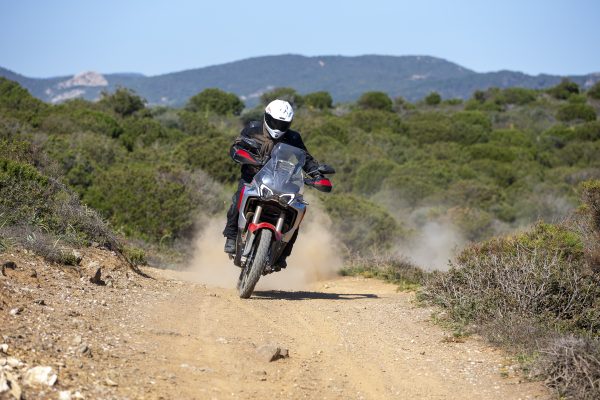
New Engine, New Era
Development of MV’s new three-cylinder platform kicked off in 2019. This modular engine is the foundation for an all-new model family, including sportsbikes.
We first saw the powerplant in MV’s R&D facility, before the concept bike was unveiled at EICMA 2021 in Milan. At the time, it wore ‘Lucky Explorer’ branding – shared with a smaller TRK 502-based model – and featured a white paint scheme with graphics inspired by the Cagiva Elefant that won the 1990 Paris-Dakar Rally under Edi Orioli. The ‘Lucky Explorer’ name was a clever nod to the Lucky Strike era of tobacco sponsorship, long since banned from motorsport.
Interestingly, Ducati also lays claim to the 1990 Dakar heritage with the DesertX, as the Cagiva group (including Husqvarna, Moto Morini and later MV Agusta) was then owned by the Castiglioni brothers, and Ducati engines powered the race-winning Cagivas.
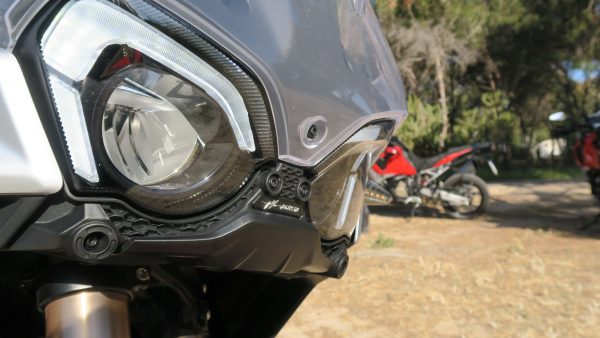
Enter the Enduro Veloce
Today, that old branding survives only faintly, stamped into the rubber grips of the production model now called the Enduro Veloce.
The production bike takes a more conservative approach to styling. Classic Ago Red and Ago Silver paint hark back to Giacomo Agostini’s glory days. But while the looks are retro, the soundtrack is all-modern MV – a glorious, snarling triple that echoes with heritage and excitement. On song, the Enduro Veloce unleashes a symphony of intake and exhaust noise that stirs the soul and gets downright addictive. Acoustically, it’s one of the most evocative bikes on sale.
MV’s claim is bold: the Enduro Veloce blends supersport DNA with genuine adventure capability. Power comes from the all-new 931cc triple, making a claimed 92kW (124hp) at 10,000rpm and 102Nm at 7000rpm.
The chassis is a double-loop steel frame with a bolt-on rear subframe. Suspension comes from ZF: a 48mm USD fork (210mm travel) with all hydraulic damping handled by the left leg, while preload and spring sit in the right. The rear shock is preload and rebound adjustable, mounted to a cast aluminium swingarm via progressive link. Fuel capacity is 20L, seat height is 850mm (adjustable to 870mm), and kerb weight is 230kg dry.
A 7-inch TFT display offers four riding modes – Touring, Urban, Off-Road, and a fully custom map where you can fine-tune traction control, engine braking, wheelie control and ABS. The windscreen is large and fixed, offering decent wind protection. Above the speed limit, you can ride with your visor cracked and still enjoy the triple’s glorious soundtrack.
The new engine is a cracker. Smooth, torquey and flexible from just 2500rpm all the way to an 11,000rpm redline. There are no dips or vibrations, just creamy torque and a mechanical thrum. The quickshifter is crisp and the clutch has a great bite point that allows fast exits even in higher gears.
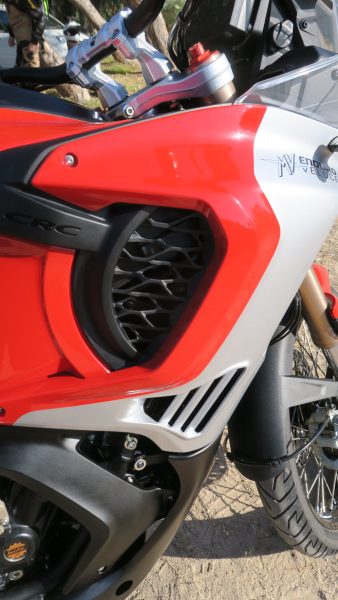
On the Road… and Beyond
On twisty tarmac, the MV holds its own. The 21-inch front wheel tracks accurately, and the Bridgestone Battlax tyres are well suited to spirited riding. The road setup is excellent. But if you start chasing supersports through Sardinia’s best twisties, a 19-inch front would offer better feedback.
Off-road, the Enduro Veloce does a solid job – at moderate speeds. It’ll take you over gravel tracks to the alpine hut, beach or lookout with ease. But don’t mistake it for a rally bike.
Ergonomics are a limiting factor off-road: the ’pegs are too high and forward, creating a tight knee angle, even with the seat in the high position. The ’bar is low and pulled back, which makes it hard to ride fast in a standing position. The fork isn’t tuned for hard hits, and the engine lacks a little bottom-end punch for sliding turns or powering out of tricky situations.
But none of that should be a surprise. MV says it’s a 70 per cent road/30 per cent off-road machine – and on the bitumen, it shines.
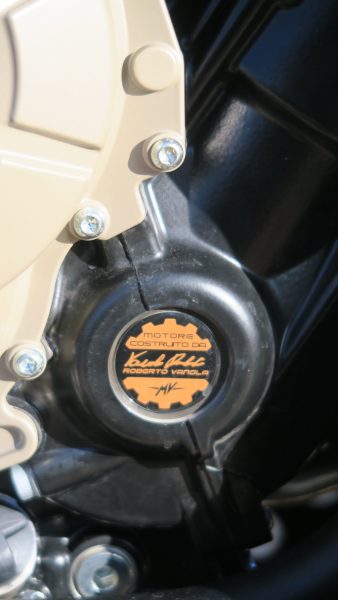
Verdict
The MV Agusta Enduro Veloce is a compelling new entry in the adventure space. Thankfully, KTM didn’t bin it like the smaller 550cc concept when it took control of MV Agusta.
It’s a supersport on stilts – dynamic, engaging and road-focused. The engine is superb. Comfort, electronics, wind protection and suspension are all road-trip ready. Off-road? Sure, excursions are possible, but but it doesn’t want to be raced in the dirt.
Pricing in Europe starts at €23,000, justified by quality, build and performance. But aside from Launch Control, it’s not brimming with standout tech over and above many of its competitors, so whether that premium price holds up in a crowded market remains to be seen.
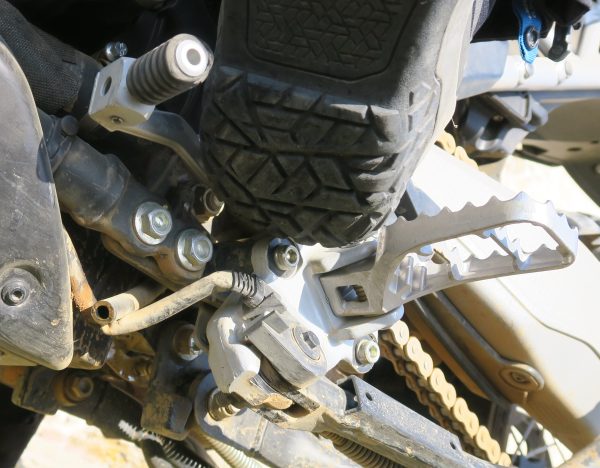
Triple Treat
The three-cylinder engine of the Enduro Veloce with 931cc and a firing order of 120 degrees produces a claimed 92kW (124hp) at 10,000 rpm, with maximum torque of 102Nm at 7000rpm. To improve the handling of the bike, the crankshaft rotates in the opposite direction to the wheels, requiring an intermediate shaft, also designed as a balancer shaft, to transmit the power to the gearbox. The crankshaft with plain bearings and the intermediate shaft are located in the diagonal split plane of the engine housing, which runs approximately parallel to the front fork.
Power is transmitted via a conventional wet clutch to the six-speed cassette gearbox which can be removed from the housing on the right-hand side of the new engine. A new feature is the assembly of the shifting dogs, which now no longer lie directly on the shift drum but slide on separate pins. The completely new aluminium engine housing is designed as a dry sump with an integrated oil tank, the cylinders are integrated in the upper part of the housing and, at 370mm wide, the powerplant is quite narrow for a three-cylinder engine.
The two camshafts are driven via a timing chain on the left-hand side of the engine; these act directly via bucket tappets on the valves with a diameter of 31.8/26.7mm, which are positioned at an angle of 11° (intake) and 12° to the cylinder axis. The engine is fed via a ride-by-wire system and three throttle valves, each with a diameter of 47mm. The cooling circuit has been optimised, with the coolant now being fed directly into the cylinders at the front of the engine.
With a declared total weight of the engine of 57kg including throttle bodies, the powertrain is probably only a few kilograms heavier than competitor two-cylinder engines.
Specifications
Price: From €23,000 in Europe
Power: 92kW (124hp) at 10,000 rpm
Torque: 102Nm at 7000 rpm
Engine: Four-stroke, three-cylinder in-line engine, water-cooled, four valves per cylinder, DOHC
Capacity: 931cc
Bore x stroke: 81 x 60.2mm
Fuelling: Intake manifold injection, 47mm.
Gearbox: Six-speed gearbox, final drive via chain
Chassis: Bridge frame made of steel elements with double beam.
Front suspension:48mm USD fork, fully adjustable, 210 mm travel
Rear suspension: Alloy twin-sided swingarm, monoshock connected via progressive link, fully adjustable, 210mm travel
Wheels: Tubeless spoked wheels with alloy rims
Tyres: front 90/90-21, rear 150/70-18
Brakes: Twin 320 mm discs with four-piston calipers front, single 265mm disc with two-piston caliper rear
Wheelbase: 1610 mm
Caster: 118 mm
Seat height: 850–870 mm
Fuel tank capacity: 20 litres
Weight: 245kg with 90% fuel
Equipment: Electronic throttle grip, four riding modes (Touring, Urban, Off-Road, Custom All-Terrain), traction control, wheelie control, engine drag torque, adjustable cornering ABS, quick-shifter, cruise control, launch control, LED headlights, 7-inch TFT display, Bluetooth connection, USB port, power socket
Warranty: 4-years
Serivice: Inspection at 1000km, then every 7000km
